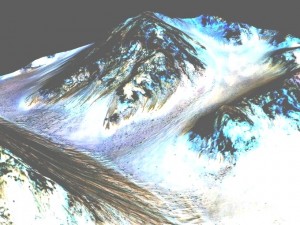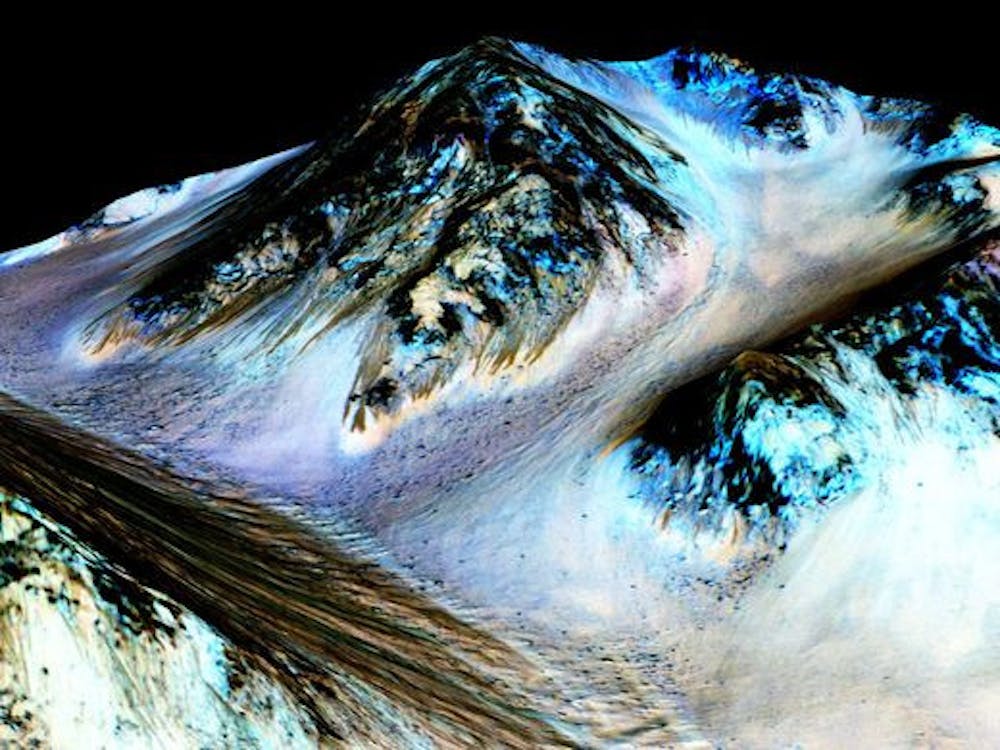By Catherine Herbert
Correspondent
On Monday, Sept. 28, NASA made the announcement that there is definitive proof of water on Mars. While scientists have had theories about there being water on Mars for some time now, there had not previously been any validated proof of this until NASA’s report.
The hypotheses about water existing on Mars were studied thoroughly using Imaging spectroscopy, which “refers to measuring the intensity of light as a function of its spatial position, while spectroscopy detects the dependence of intensity on the wavelength of the light,” reported CNN. This imaging gave scientists a clear look at “mysterious dark streaks” running down the slopes referred to as recurring slope lineae, according to NASA.
It was Georgia Institute of Technology undergraduate student Lujendra Ojha who first noticed the mystifying streaks, now called recurring slope lineae, back in 2010. He was studying images produced from the HiRISE camera attached to the Mars Reconnaissance Orbiter, reported National Geographic. Ojha was unaware of just how vital his observation would be in leading to the discovery of water on Mars.

Imaging spectroscopy alluded to the possibility of water. However, it took examining the culmination of four years of data from the HiRISE camera to confidently come to the conclusion that there is in fact present day water on Mars.
What led scientists to be able to confirm that the dark streaks shown in the summer months on the slopes of Mars was flowing water was the discovery of the presence of a certain type of salt. This salt is called perchlorate salt, and the presence of it is so important because this type of salt is hydrated, or composed of water, according to NASA. These perchlorate salts are pointing to contemporary water, and not ancient water, as was previously theorized.
Ojha and his colleagues found these hydrated crystals to be present at multiple locations of recurring slope lineae, but they were only present when these dark streaks were wide, and seemingly disappeared when the streaks were not as prominent, reported NASA. Following this discovery, questions such as ‘where does this water come from?’ were asked.
What this means exactly for the scientific world’s future is not crystal clear, but overwhelming international excitement has ensued following this discovery.







